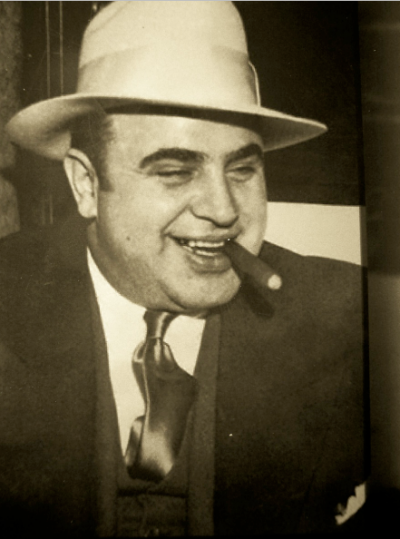|

Al Capone was a teddy bear compared to current organized crime kingpins
Yesterday a fascinating man called Roberto Saviano was interviewed on BBC HardTalk . Roberto spoke very clearly and frighteningly about organized crime involvement in the illegal drug trade. He needs bodyguards to travel on the streets these days.
When we hear “organized crime” we tend to think of Al Capone and the Mafia. Al Capone, while he ran his organization very strictly and ordered many people killed, cannot be compared to the level of nastiness used by organized crime syndicates these days.
Some time ago, I wrote a blog on this issue . I would strongly advise that you read this carefully to understand what we are up against. Organized crime has become significantly embedded in South Africa, Kenya and Nigeria at least. We all accept that those countries are highly corrupt, but we now need to accept that organized crime has penetrated state institutions to the highest levels. This means the police, customs, judiciary, politicians, security forces etc. Organized crime has also been able to recruit many in the business community.
The illegal wildlife trade is just another means by which organized crime syndicates can earn huge amounts of money. Their annual global income was estimated at $1.3 TRILLION in 2010. The diversity of means of income is enormous – think drugs, human trafficking, arms trafficking, money laundering, abuses of copyrighted products, smuggling, prostitution, etc , etc, etc. And now increasingly illegal wildlife trafficking.
While a diversity of well-meaning NGOs and UN organizations and INTERPOL are beginning to realize the scale of the illegal trade in wildlife, I believe we are still well behind in effectively dealing with the organized crime syndicates responsible for the trade. Unless and until we accept that these syndicates have well established their extensive playgrounds, we are asked to play poker with a very small number of cards and we certainly do not hold any Kings or Aces.
Recent “summits” on the illegal wildlife trade have focused on three main areas of engagement. These are better law enforcement, demand reduction, and involvement of communities.
Better law enforcement assumes the ready participation of agencies that are already highly corrupt and “penetrated” by crime syndicates. It will take a very long time to achieve any positive change. Similarly, demand reduction, while showing some progress, will also take very many years to make any difference. While demand reduction has seen progress in terms of shark fins, for example, there has been no discernible impact on the demand for ivory, rhino horns, pangolins and lion bones in Asia. Demand reduction might be focusing on China, but the USA has been clearly identified as the second-largest consumer of illegal wildlife trade products. The EU is not far behind.
The community aspect receives the least attention, possibly because this needs to address some very difficult issues like rural poverty and provision of alternative incomes to persuade community members to turn away from poaching as a risky but lucrative source of short-term income. But I believe this is where the most effective and durable interventions can be made. Illegal wildlife traders cannot survive without poachers, and those poachers are recruited from local communities. Without those foot soldiers the kingpins cannot survive.
We need to accept what is real, and attack the weakest links. The way to defeat organized crime syndicates involved in the illegal wildlife trade is perhaps not by a frontal attack but by flanking movements. The communities hold the key to reducing wildlife crimes as their poacher recruits are possibly unwilling participants to begin with and risk condemnation by their other community members. Give them safe and well-paying jobs and those who come along and attempt to recruit poachers might well see themselves tarred and feathered and thrown into the ditches where they belong.
Picture credit: http://bit.ly/1I0nsWF
|




